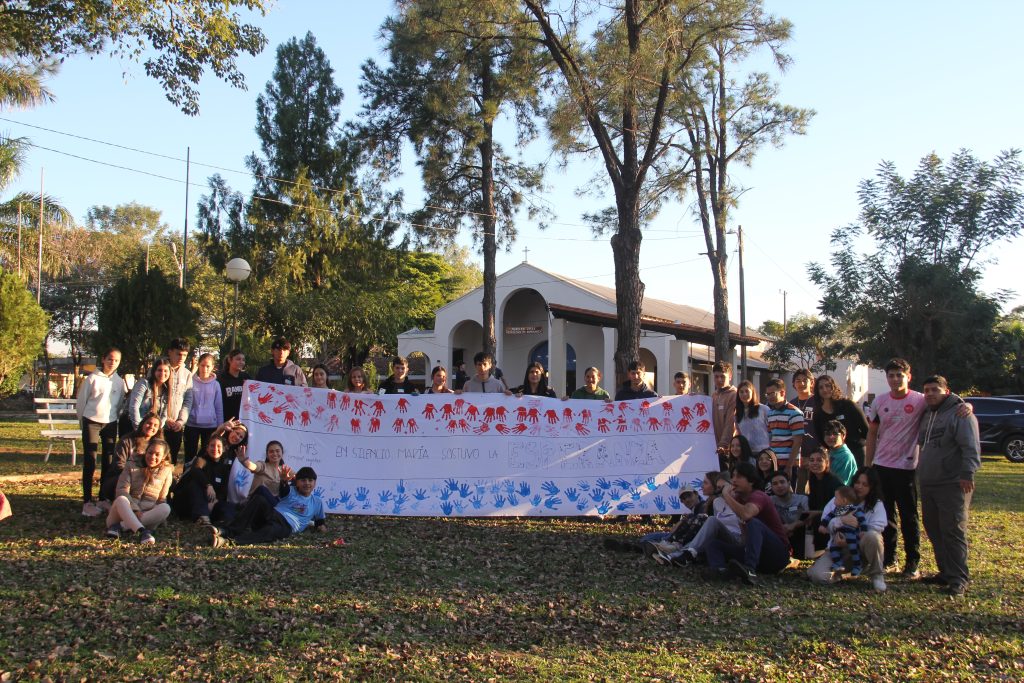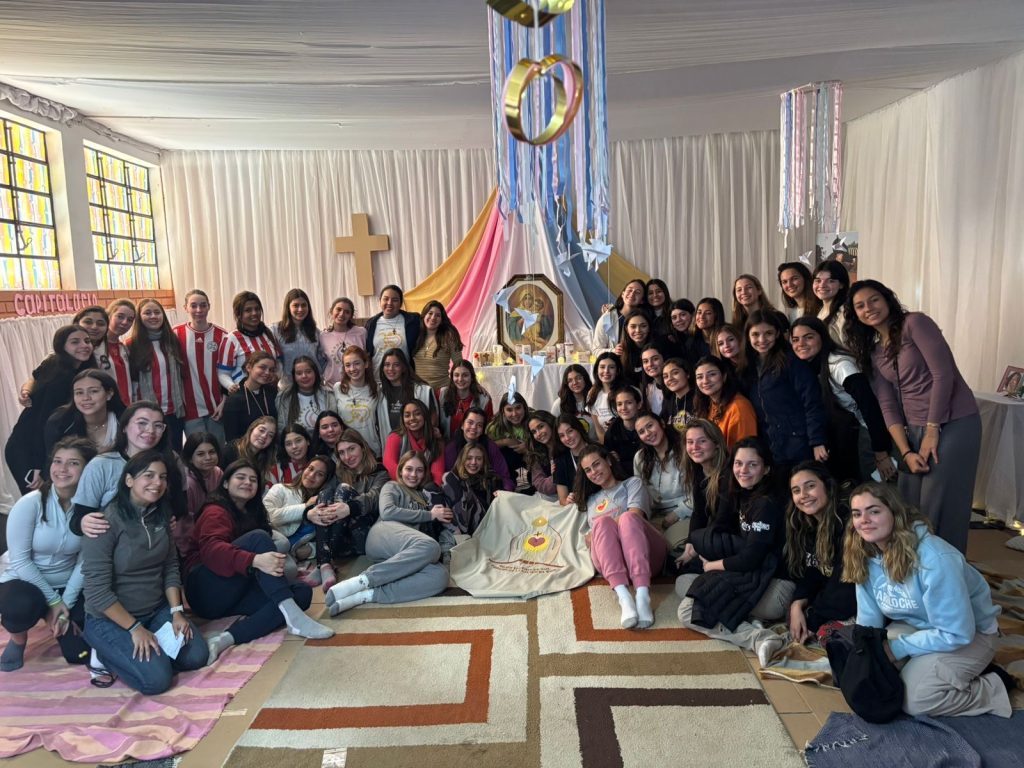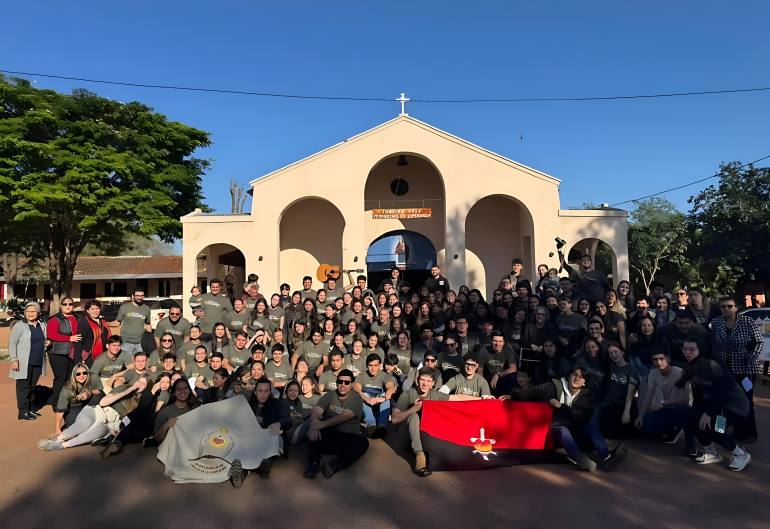Each winter, during five days in July, hundreds of young people and families leave behind the comfort of their routines to take part in a life-changing experience: the Schoenstatt Family Missions (MFS). Organised by the Apostolic Movement of Schoenstatt, these missions are carried out simultaneously in ten towns across the Paraguayan countryside, selected for a cycle of three consecutive years.
In each edition, approximately 150 young people under the age of 25, together with commited families, join with hearts open to listen, to serve, and to accompany those who need it most.
This year, the towns receiving the missions were Tobatí, Santaní Norte, Santaní Sur, Santa Elena, Mbocayaty del Yhaguy, Juan de Mena, Itacurubí del Rosario, Isla Pucú, General Aquino, and Arroyos y Esteros. In each of them, the arrival of the missionaries does not go unnoticed. The local inhabitants eagerly await, celebrate, and deeply value the event.
Adoptive families and lasting bonds
One of the defining features of these missions is their family-based structure. A life family, composed of adults from the Schoenstatt Movement who are already in a more mature stage of life, temporarily “adopts” each young participant. With them, the young adults share dinners, reflective moments, and spiritual support. Simultaneously, during the day, the missionaries join a mission family, and go door-to-door in their assigned area of the town.
This system fosters strong, genuine bonds that often last well beyond the five days of mission. For many, these “adoptive families” become true mentors, friends, and guides in everyday life.
Knocking on doors, reaching hearts
The missions take place in two daily shifts: in the morning and in the afternoon. Each mission family receives a specific territory, and visits every household without exception. Neither the cold, nor the rain, nor fatigue deters them. The objective is clear: to reach every home, listen to each person, pray with them, and bring the image of the Pilgrim Virgin of Schoenstatt.
This image, framed in wood in the shape of the Tuparendá shrine, becomes a symbol of comfort and hope. In many homes, it brings tears, and draws out smiles from deep within. For many, it represents far more than a gesture: it is a reminder that they are not alone.
The missionaries observe and listen. They encounter harsh realities: children working from a young age, bedridden or ill individuals, elderly people living in complete solitude. Each conversation and each look leaves a mark. The mission does not only transform those who receive it; it profoundly changes those who carry it out. It opens eyes, expands the heart, and strengthens faith.


Moments of joy in the Schoenstatt Family Missions
Beyond the house-to-house visits, the missions create spaces for community gathering. In the afternoons, missionaries lead workshops for children, youth, and adults, tailored to each group’s needs. Through dynamics, music, games, talks, and prayer, the missionaries bring spirituality to life in a way that is tangible and accessible.
One of the most anticipated moments is the matinée on Saturday afternoon. A grand celebration takes place, where all collectively celebrate the birthdays of all the town’s children. There are costumes, games, music, gifts, a giant cake, and the traditional sorpresitas (party bags filled with sweets and small surprises). The joy is both contagious, and deeply moving.
During these days, the missionaries stay in local public schools. Outside of mission hours, they take part in group activities. They reflect on their daily experiences, share their emotions, pray, and sing. Amid games, talks, group dynamics, and silent moments, young adults discover new ways of connecting with themselves, and with others.
A mission that does not end upon returning home
The Schoenstatt Family Missions do not end when participants return to the city. What is lived remains in the skin, and in memory. The bonds created, the stories shared, the tears and the laughter, all endure. To take part in the mission leaves an indelible mark and a vital lesson: that there is always something to give, that there is always someone waiting to be heard, and that hope can knock on a door… and remain forever.


